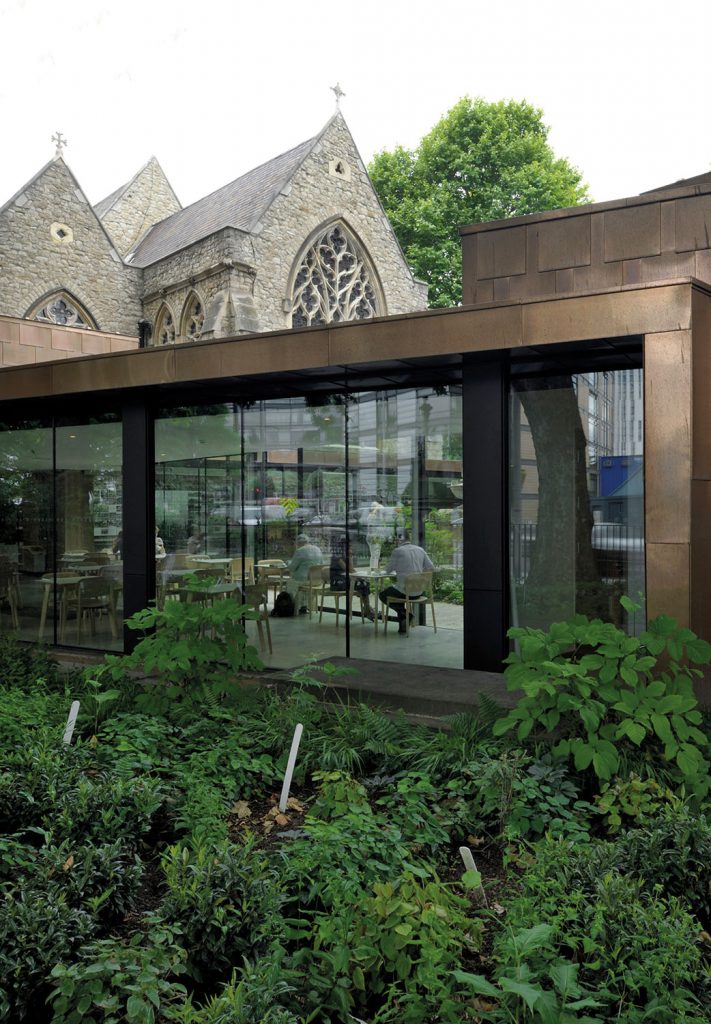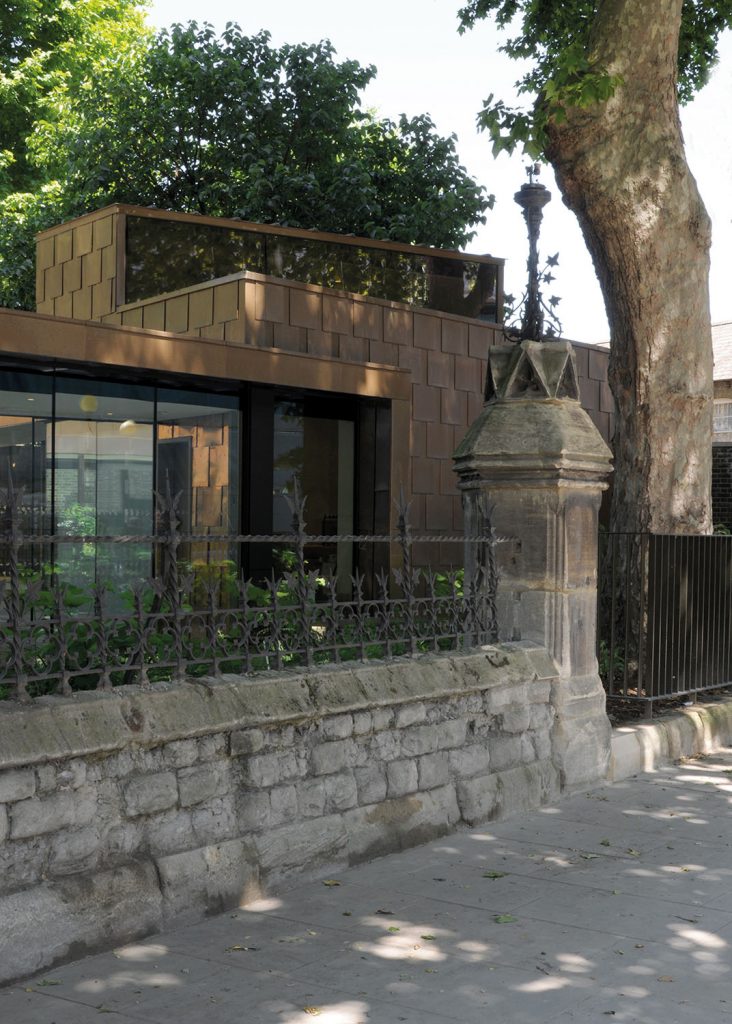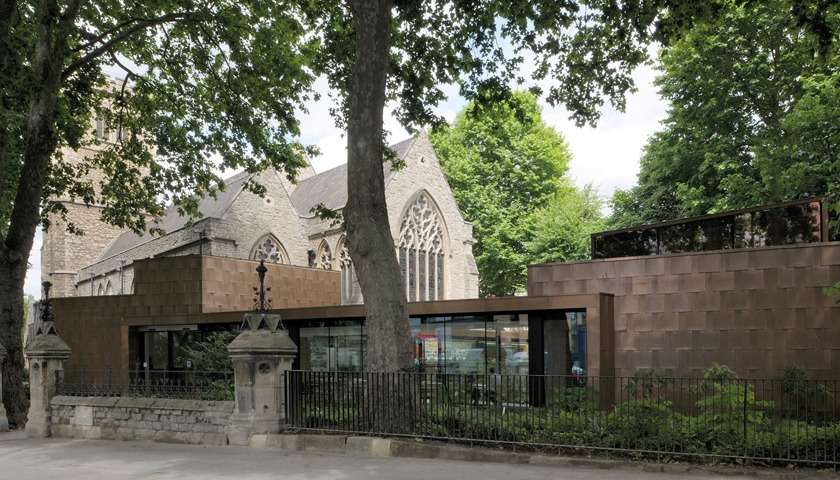Dow Jones Architects’ recently completed Garden Museum Phase 2 uses Nordic Bronze clad interventions to create a fresh yet gentle identity for a historic church and graveyard, differentiated from the neighbouring Lambeth Palace.
London’s Garden Museum is housed in the deconsecrated grade II* listed church of St Mary at Lambeth. Dow Jones Architects’ first phase in 2008 involved a two-storey gallery inside the church, creating new galleries, an education room and storage, and consolidated the nave as an events space. The competition-winning second phase extends the museum both within the existing building and out into the churchyard, creating a new public face. New garden pavilions provide education rooms for a range of learning and community activities, and a café. They are connected by a glazed cloister that frames a new Dan Pearson designed garden and are clad in Nordic Bronze copper alloy from Aurubis.

Interlocking shingles with concealed fixings are set out in a distinctive, plate-like pattern conceived as being reminiscent of the flaking bark of the surrounding plane trees. The shingles wrap tightly around the façade, meeting the windows and slim warm roof construction to form a crisp outline. Mechanical extract vents are integrated into the cladding with custom bronze cowls that protrude outwards.
Lightweight Material
The architects chose Nordic Bronze as “a lightweight material that weathers from a bright copper colour to an even earthy chocolate brown. This colour will allow the building to sit quietly within the graveyard, allowing the garden and church the strongest presence”.
Nordic Bronze is produced by Aurubis, part of the world’s leading integrated copper group and largest copper recycler. Other copper alloys include Nordic Brass – now also available pre-weathered – and the innovative Nordic Royal, an alloy of copper with aluminium and zinc, giving it a rich golden through-colour and making it very stable.
The Nordic Copper range also provides straightaway surfaces that otherwise take years to develop in the atmosphere – particularly on vertical facades. The processes involved are generally similar to those taking place over time in the environment, utilising copper mineral compounds, not alien chemical processes. All these surfaces form an integral part of the copper, generally continuing to change over time, and are not lifeless coatings or paint. The material is easily bent and formed, and there are no limitations on the length of copper sheet or strip because whole coils are treated on the production line, not just limited size sheets.

In addition to Nordic Standard ‘mill finish’, Nordic Brown pre-oxidised copper, offers lighter or darker shades of brown determined by the thickness of the oxide layer. The extensive Nordic Blue, Nordic Green and new Nordic Turquoise ranges have been developed with properties and colours based on the same brochantite mineralogy found in natural patinas all over the world.
As well as the solid patina colours, ‘Living’ surfaces are available for each with other intensities of patina flecks revealing some of the dark oxidised background material..


